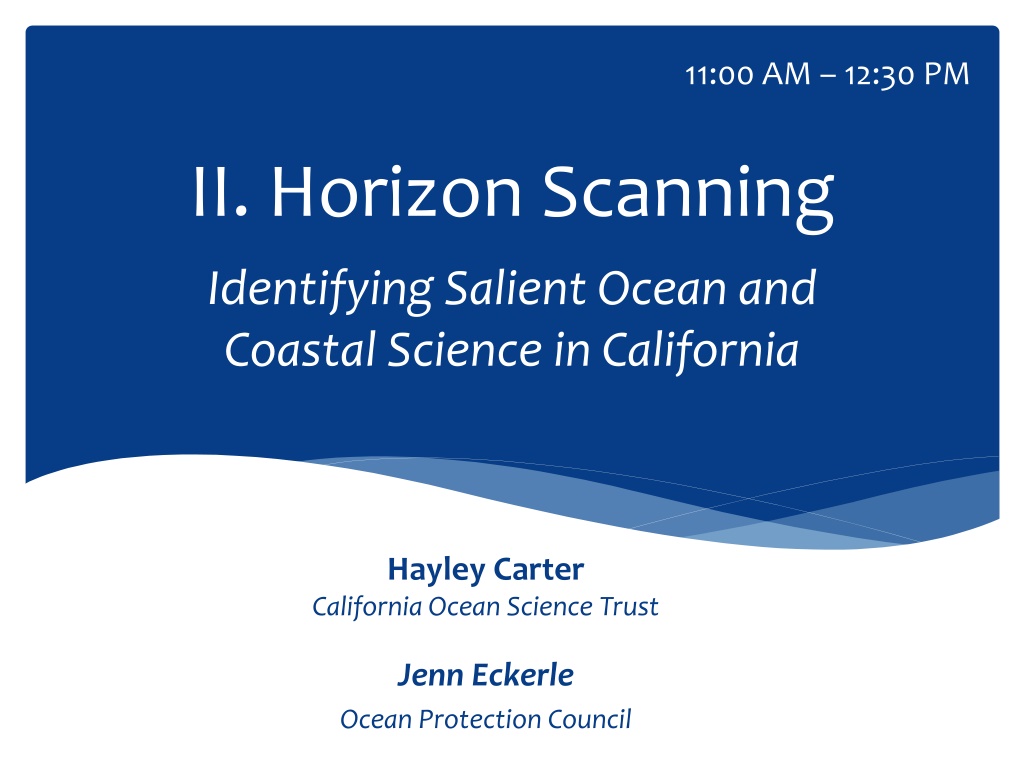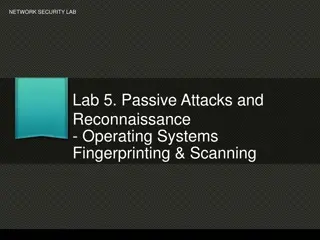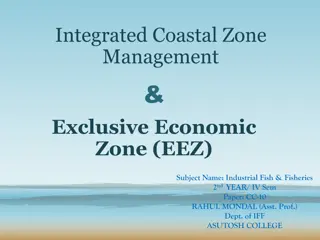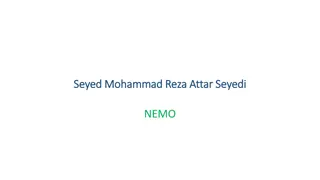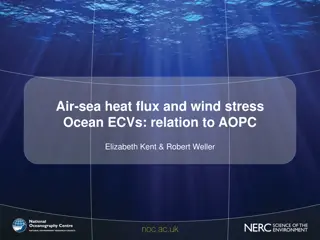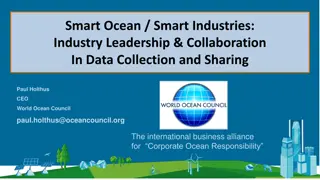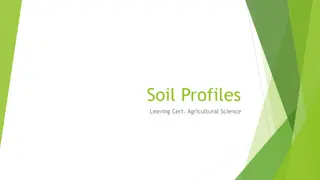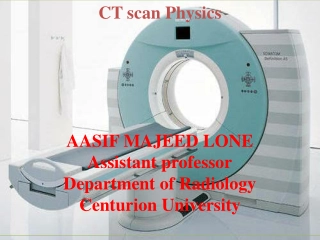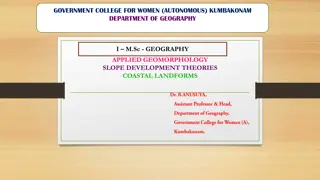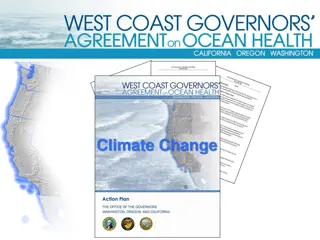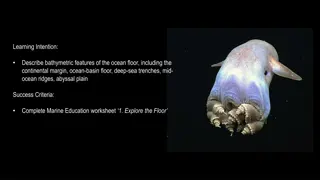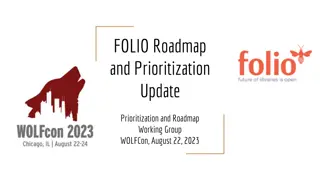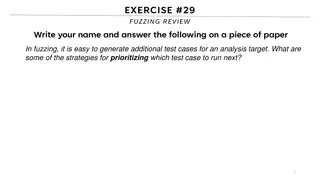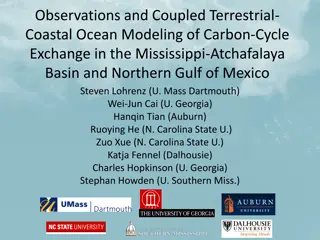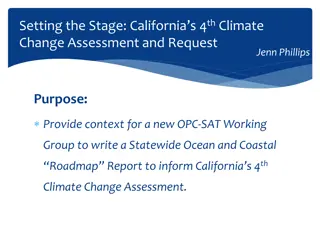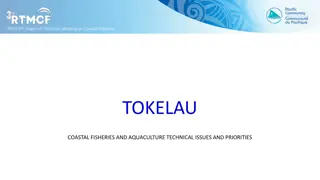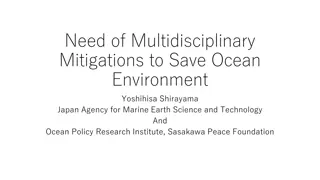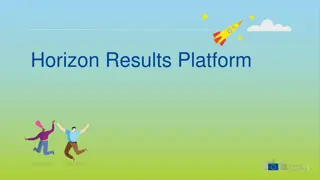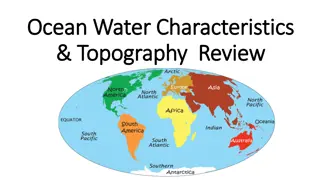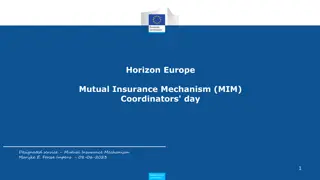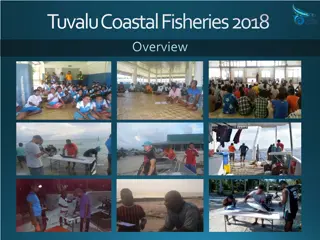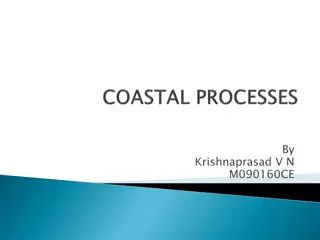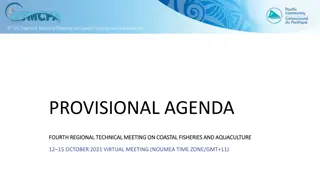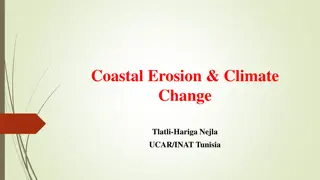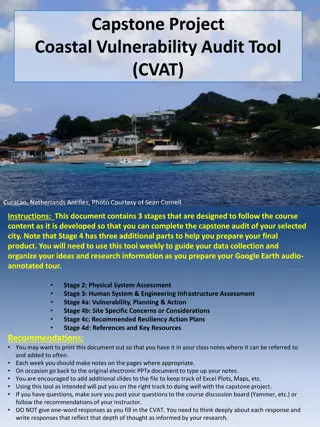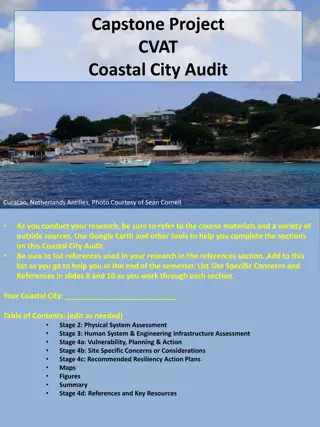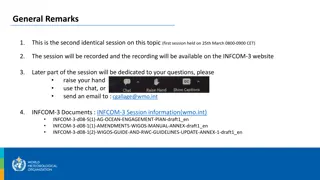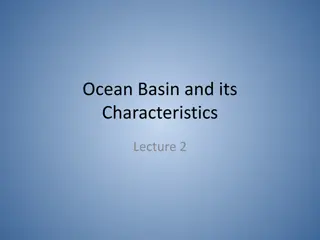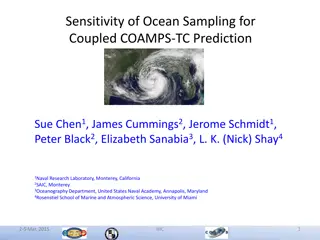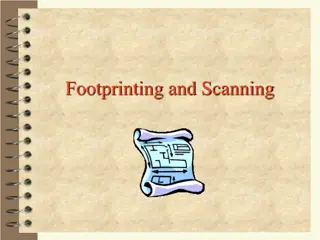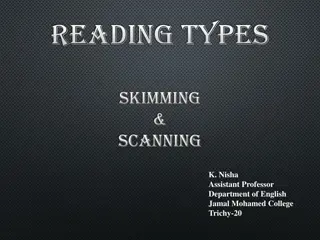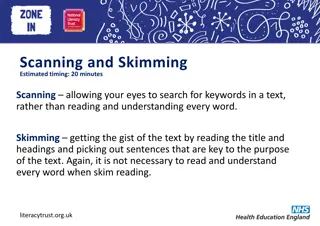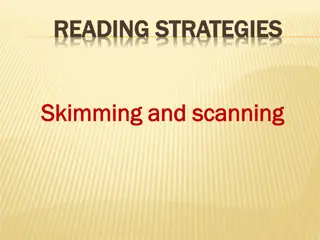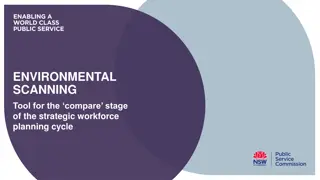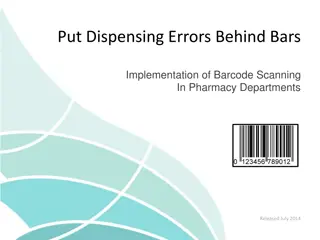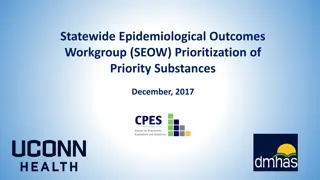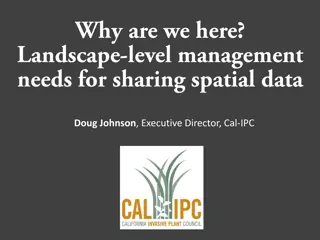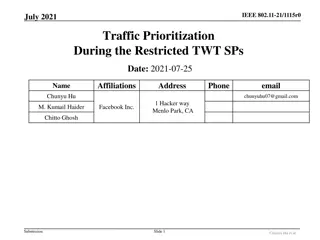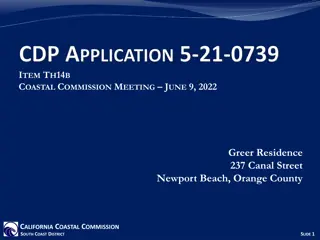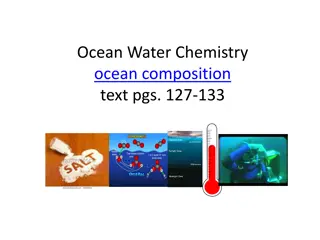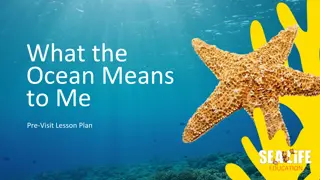Exploring Horizon Scanning for Ocean and Coastal Science Prioritization in California
In this event, experts discuss the acceleration of science integration, strategies for providing science advice, and identifying priority areas for ocean and coastal research in California. The focus is on understanding emerging issues, structuring horizon scans, and aligning with state agency needs to deliver valuable science advice. The survey results highlight key issue areas such as climate change, ocean acidification, and coastal food webs.
Download Presentation

Please find below an Image/Link to download the presentation.
The content on the website is provided AS IS for your information and personal use only. It may not be sold, licensed, or shared on other websites without obtaining consent from the author. Download presentation by click this link. If you encounter any issues during the download, it is possible that the publisher has removed the file from their server.
E N D
Presentation Transcript
11:00 AM 12:30 PM II. Horizon Scanning Identifying Salient Ocean and Coastal Science in California Hayley Carter California Ocean Science Trust Jenn Eckerle Ocean Protection Council
Goals 11:00 AM 12:30 PM Accelerate science integration. Start a conversation on how to provide science advice to the State on decision-relevant ocean research as it s emerging Discuss structure and function of a horizon scan. Illuminate ways to think about horizon scanning and prioritization criteria Discuss options for prioritization (e.g., high risk, persistent vs. episodic, low/high uncertainty, high impacts, lack of scientific understanding, etc.) Explore an initial list. OST to share summary of SAT survey responses, key priority issue areas.
Request from OPC 11:00 AM 12:30 PM The Need OPC-SAT has been asked to ID emerging ocean and coastal science issues that CA should prioritize in near- and longer-term Inform needs w/in OPC s current program areas, next 5-year strategic plan and beyond Next Steps ID alignment with State agency science needs Deliverable Science Advisor presentation at August OPC Meeting Brief report that summarizes highest priority ocean and coastal science needs
THINGS WE NEED ANSWERS TO THINGS WE KNOW (but more science might not = more answers) Credit: F. Chan
SAT Member Survey Horizon scanning SAT members asked to provide up to 5 science questions or challenges CA should prioritize in both near- & longer- term n=16 of 26 respondents 56 total contributions (varying levels of granularity) Coded for an initial (quick) analysis Sorted into high level issues, sub-issues, and specific questions e.g., Issue = climate & ocean change, sub-issue = ocean acidification, specific Q = What are the effects of ocean acidification on coastal food webs?
Survey Summary: Top Issue Areas Horizon scanning
Survey Summary: Climate and Ocean Change Horizon scanning
Survey Summary: Top Issue Areas Horizon scanning
Survey Summary: Other Issues Horizon scanning Issue area Seafloor mapping Artificial reefs Permitting and Regulatory Streamlining Dam removal Underwater acoustics Offshore renewable energy Marine spatial planning Earthquake/tsunami Science funding / capacity Sediment management Industrial ocean uses Frequency 1 1 1 1 1 1 1 1 1 1 1
Case Example: Ocean acidification Horizon scanning Consideration Issue uncertain Certain Scientific understanding Impacts uncertain Certain Potential risk to CA low High Longer- term Onset of impacts Near-term Geographic scope Regional Global Nature of issue Episodic Persistent
Case study: Ocean acidification Horizon scanning Current Opportunities: Advance field and lab studies to ID tipping points ID water quality thresholds Understand food web effects for fisheries management Advance physiological studies Understand local drivers (e.g., terrestrial nutrients) Help aquaculture industry adapt Current management/policy action Options available
Case Example: Sea level rise Consideration Issue uncertain Certain Scientific understanding Impacts uncertain Certain Potential risk to CA low High Longer- term Onset of impacts Near-term Geographic scope Regional Global Nature of issue Episodic Persistent
Case study: Sea level rise Current Opportunities: Begin planning and responding Beach nourishment, managed retreat, and coastal armoring Explore coastal armoring designs that minimize ecological impacts Complete statewide modeling of coastal flooding, shoreline change from SLR/storms Comprehensive and consistent data on offshore sediment resources Explore wetland migration options, tidal wetland restoration ID priority infrastructure and natural features to protect Current management/policy action Options available
Aligning with State Needs: Emerging Priorities Horizon scanning Aquaculture Impacts on eelgrass beds Impacts to ocean ecosystems from finfish facilities offshore BMPs that would reduce impacts (esp. marine debris) Artificial reefs Kelp restoration Offshore renewables Sediment management Fisheries Fishing community resilience Bycatch analysis Oil/natural seeps Initial contributions from: California State Lands Commission Fish and Game Commission California Department of Fish and Wildlife
Survey Summary: Top Issue Areas Horizon scanning
Discussion Horizon scanning What are ways that CA should seek to prioritize science needs (across and within issues)? Is this what the SAT envisions as a science horizon scan? How does this live on? How do we want to revisit it? What time scales should be considered? Developing a prioritized list - Is anything missing? See handout for full list
